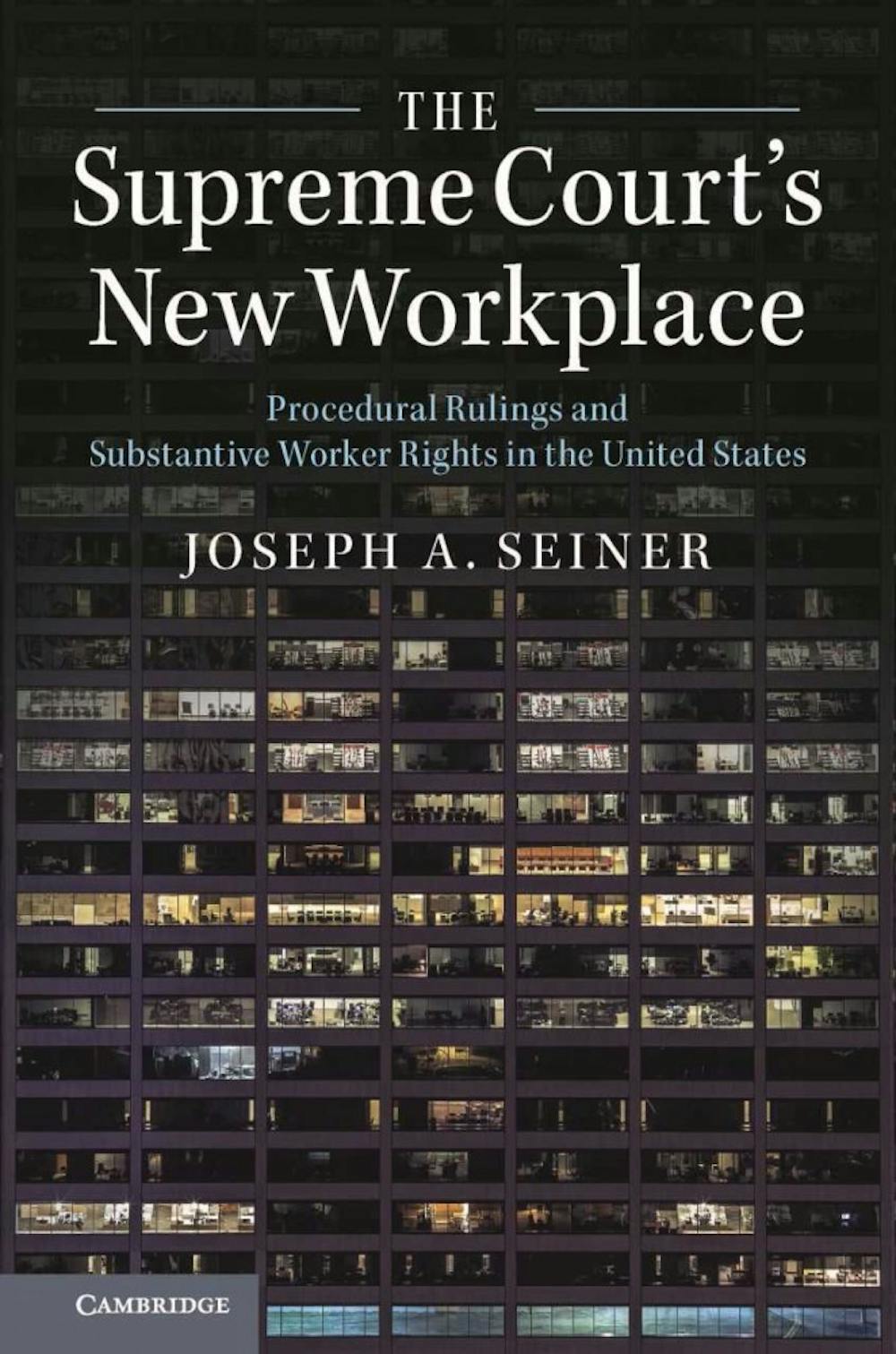USC law professor Joseph Seiner takes on the Supreme Court's ways of regulating workers' rights in his latest book, "The Supreme Court's New Workplace."
Seiner taught at Georgetown University Law Center before arriving in Columbia in 2007. A former attorney for the U.S. Equal Employment Opportunity Commission, his teaching interests include civil procedure and labor law. Published by the Cambridge University Press, "The Supreme Court's New Workplace," is his third book on workplace law and his second in 2017.
In "The Supreme Court's New Workplace," Seiner analyzes how the composition and procedural law of the Supreme Court will directly affect workplace law. The Court has seen change under the current administration with the death of Justice Antonin Scalia and his succession by Justice Neil Gorsuch, and could see more with potential for retirement for current justices such as 84-year-old Justice Ruth Bader Ginsburg.
According to Seiner, in the 1960s and '70s the Supreme Court was much clearer in its intent when deciding cases affecting workplace law. Now, procedural rulings, or those governing how the Court governs the procedures by which cases are heard and designated, are used to "undermine" the rights of workers.
"It's eroded worker rights but in a way where people aren't even cognizant of the fact that it's taking place, because the decisions themselves are so much more dry," Seiner said. "What this book does is it brings together a lot of those decisions and demonstrates exactly how these technical rulings have undermined the protections of workers."
Seiner said many of the rulings occurred under Chief Justice John Roberts, appointed by former President George W. Bush in 2005.
To advance his thesis, Seiner cited the decision in the case of Wal-Mart Stores, Inc. v. Dukes, in which the Court reversed a district court decision to certify a class action lawsuit. In the case, plaintiff Betty Dukes of California accused Wal-Mart of sex discrimination after being consistently refused a position with a higher salary. When the case advanced to the U.S. District Court in San Francisco, Dukes's suit included over one million women who had worked in Wal-Mart stores since 1998.
In 2011, the Supreme Court decided by a 5-4 margin that the plaintiffs did not constitute a class, and that a class action suit could not proceed. This decision, Seiner said, made it far more difficult for a group of workers to bring a workplace claim to court.
Aside from the ability to file class action lawsuits, Seiner analyzed in his book the Court's effect through procedural rulings on seeking damages and navigating the initial litigation involved with filing a lawsuit, even for an individual. In keeping the book topical, Seiner set aside a chapter of the book to how procedural rulings affect workers in the "modern technology sector," including cases involving transportation companies Uber and Lyft.
As for how the Court's procedural law would affect workers just entering the labor force, Seiner simply said, "It makes it tougher."
"The requirements and the direction the Supreme Court has proceeded under for the last 10 years and direction that it appears to be heading in the future, given the current makeup of the Court, makes it far more difficult for somebody entering the workforce to bring these types of claims," Seiner said. "And it's always more difficult for a new worker, because you're just getting your career started and if you've been harassed or you've been discriminated against, you might have some reluctance to bring these claims."
Released Friday as an e-book, "The Supreme Court's New Workplace" will be available in hardcover and paperback on August 31.

